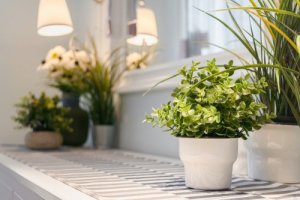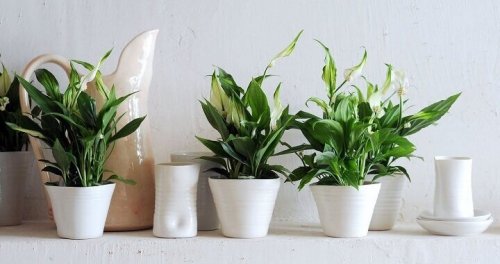9 Tips for Caring for Indoor Plants

Indoor plants require special care. The type of plant, light, irrigation, and temperature are all factors to consider. If just one of these factors is not present, not adequate, or too much, you plants will wither and they could die.
Plants almost always die not because of poor care, but because their needs are not known. A pleasant and comfortable environment for a human may not be the best environment for a plant.
Basic Tips for Caring for Indoor Plants
First of all, these are good tips to keep in mind:
Choosing the kind of plant is important.
There are certain species of indoor plants that need very specific care and environments, while there are others that thrive with minimal attention.
When buying plants, it’s important to find out what environmental conditions they need. Then, you can decide if you can provide the appropriate environment.
All plants require sunlight.
Indoor plants with dark leaves and ferns need less light. If they don’t have enough light, they will immediately begin to suffer. The leaves will turn yellow and the stems become abnormally long. The plant will become stressed and lose its vitality.
For all of these reasons, it’s necessary to observe how the plant reacts and adapts to its location. If it does not receive enough light, it will have to be moved.
Keep in Mind All Environmental Conditions
Keeping a plant in the right temperature is also very important. Sudden changes in temperature can damage them. It is also best to not place them close to any sources of heat or cold.
In addition, over-irrigation is another key element. The most common reason that an indoor plant wilts is because of excess water. The soil can let you know if there is too much or too little water. It should be damp, but not soaked or muddy.
The temperature of the environment also impacts the water demands of the plant. If the air is drier than normal, the plant will require more humidity. In these cases, you should moisten the leaves periodically with a sprinkler or spray bottle. This will greatly benefit the plant.
Discover: The Health Benefits of Plants in Your Home
Watering the Plant

- You can water a plant from below. You do this by placing the pot in water for a few minutes. This will allow it to absorb the necessary amount it needs.
- The best flowerpot for indoor plants are mud pots. These are permeable and favor growth. However, plastic pots can be used, as well.
- When the tray or plate underneath the pot has water it in, you must empty it. That water is surplus water that the plant no longer needs. You can also fill these dishes with stones or gravel so that the bottom of the pot is not touching the wastewater.
Caring for the Soil, Roots, and Leaves
- For transplanted and grafted plants, observe their growth well. You want to prevent roots that become too tight and roll up in the pot, because it deprives the roots of air.
- When replanting plants, it’s a good time to replace the soil. Some plants require soil with certain characteristics or nutrients, so you should be familiar with what kind of soil your plant needs.
- Keep the leaves clean. This helps keep the plant healthy. The leaves of indoor plants easily get dirty with dust. To clean them, rub them with a cloth that is dampened in a few drops of glycerin. Glycerin helps prevent dust from adhering to the leaves and makes the leaves shiny.
- Compost is very beneficial for plants, especially when they have spent most their life in the same soil. The topsoil can become impoverished, which depletes the plants much needed nutrients. When the plant is growing and flowering, it needs more food and nutrients.
- Pay attention to fungi and pests. Indoor plants can also get sick from pests. You need to pay attention to spots on the leaves that suggest the presence of pests. If you believe there are pests affecting your plant, it is best to consult a specialist.
Discover: How to Get Rid of Indoor Plant Insects Using Vinegar
Plants not only contribute to the decoration of our homes, but they also provide oxygen and hydration. For a healthy and thriving plant, it’s necessary to keep them in optimal conditions with care that is adapted to their specific needs.
All cited sources were thoroughly reviewed by our team to ensure their quality, reliability, currency, and validity. The bibliography of this article was considered reliable and of academic or scientific accuracy.
- Hernando Perez Rojas, Martin de Paul Cortes. 2007. SIMULACION Y CONTROL DE LA TEMPERATURA DENTRO DE UN INVERNADERO.
- Aula virtual. agro. FUNDAMENTOS Y TÉCNICAS DE INJERTACIÓN. Disponible en: http://aulavirtual.agro.unlp.edu.ar/file.php/23/CURSADA/TP-S3-Guia_injertos.pdf
This text is provided for informational purposes only and does not replace consultation with a professional. If in doubt, consult your specialist.








